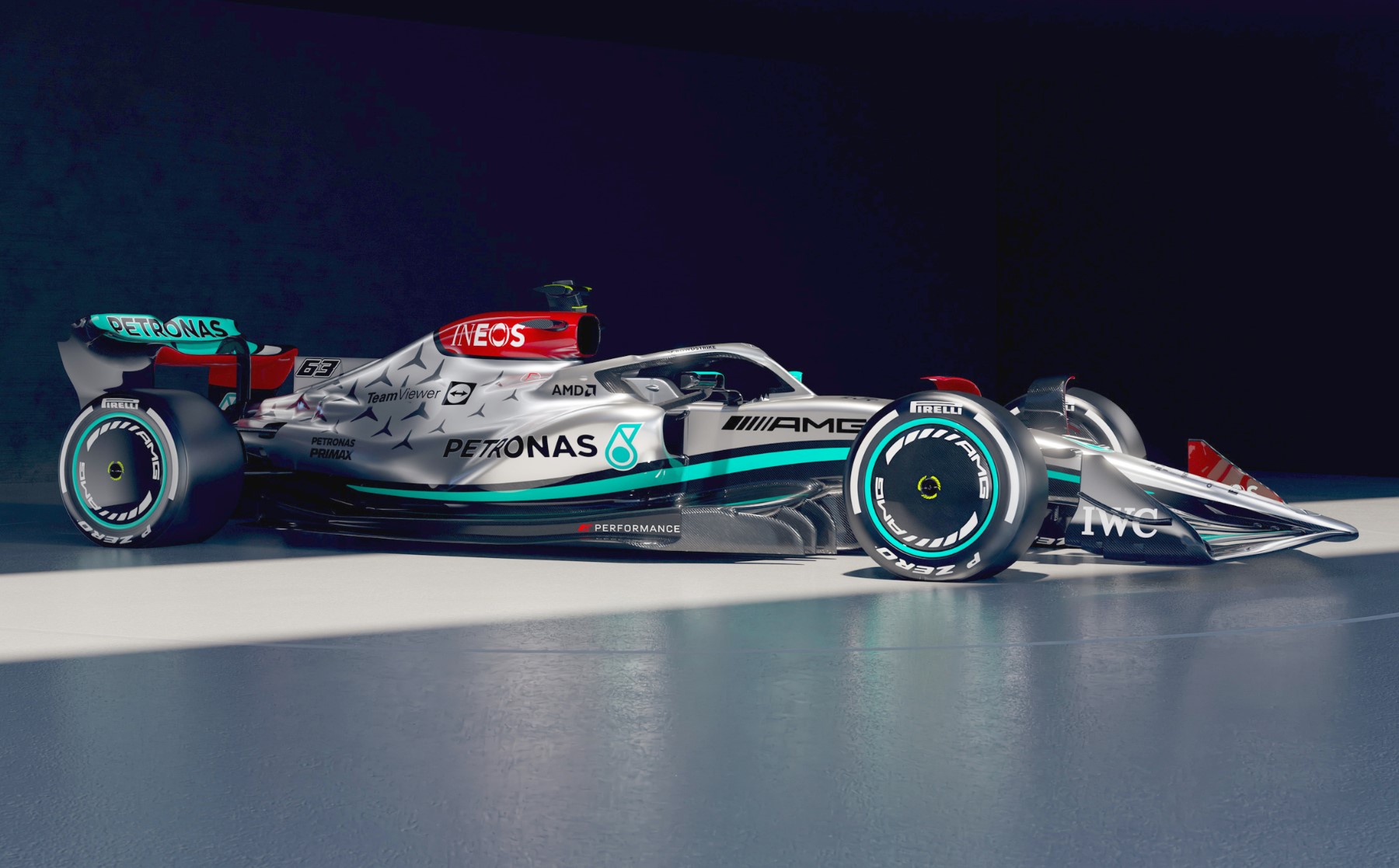F1: Mercedes launches its 2022 W13 car (Update)
Mercedes has released these launch photos of the real car. The renders of the W13 and the physical car shown below launch aren’t the same.
So which is the real W13? Likely the real photos below.
Regardless, the front wing on both representations is not only interesting, but it’s a bit different to the other cars on the grid. Many of the 2022 cars seen so far have focused on loading up the inboard part of the wing, filling as much of the bounding box as possible – even at the attachment points to the nose.
The sidepods have offered further variation in design, probably aligning most closely with the McLaren MCL36, but nothing like the Ferrari.
“Getting to the desired aero shapes has meant a complete internal repackaging,” said Mercedes’ technical director Mike Elliott, “right down to the electrical layout and where we fit things like the ECU.
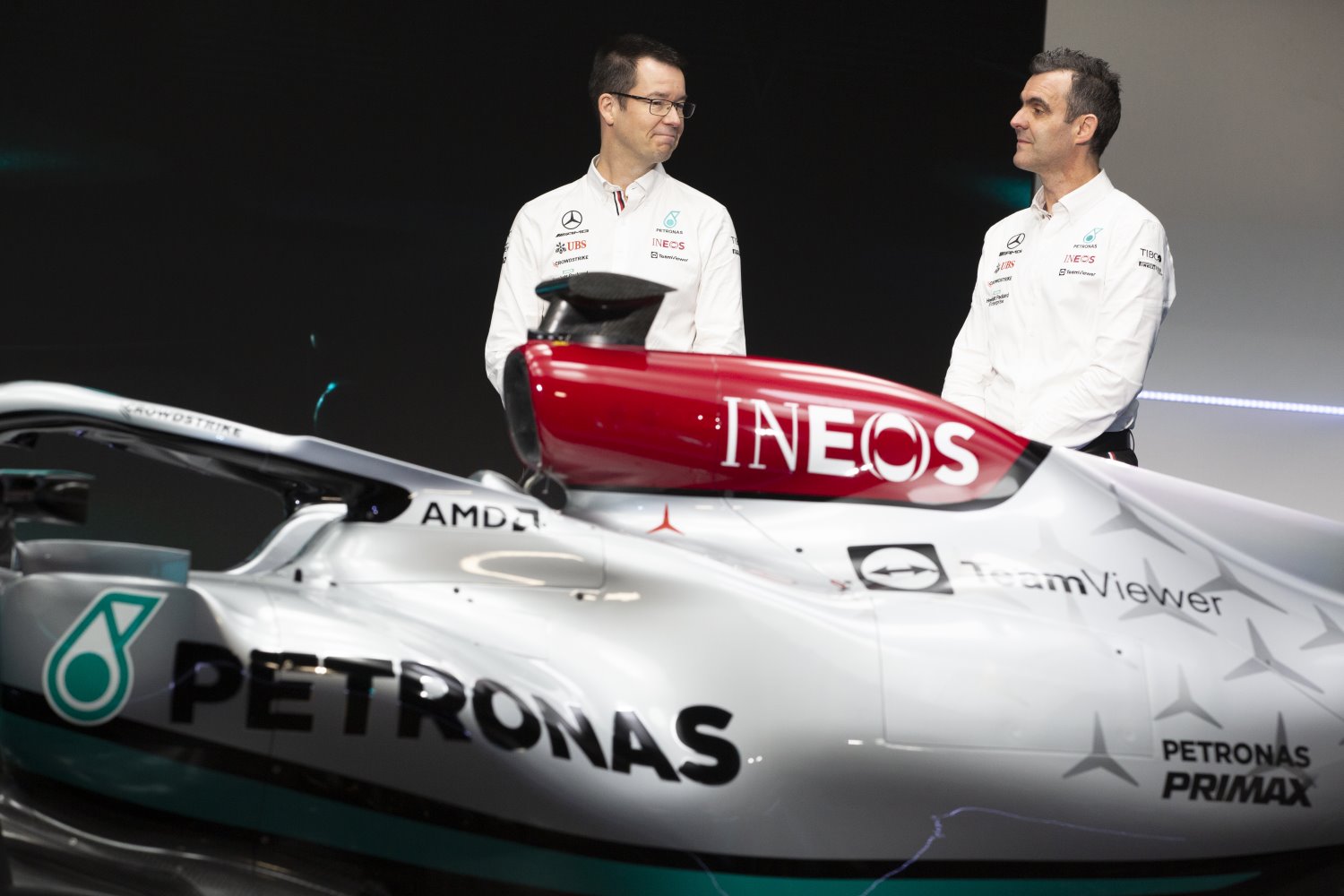
“The suspension has been redesigned to account for the loss of hydraulics and remote springs, now banned in the new regulations. Hopefully, you will also see that we have taken another step with how tightly packaged the sidepods and engine cover are. To get to this is not just a shrink-wrapping exercise but requires a huge amount of redesign and simulation to make it work.”
“The project we took on for 2022 was large,” said Thomas, “and it is a very broad upgrade across the different elements, to get every last bit of performance, efficiency and reliability. There are also some FIA-imposed measurements, particularly in the ERS system, that we had to accommodate as well.
“The chassis team have been working very diligently and swiftly through the new regulations, so they can understand where the opportunities lie, and which areas are lap time sensitive. We make adjustments to the PU that allow the chassis team to best exploit the regulations. We might want to rearrange the installation slightly or change the PU layout to get more flexibility in those lap time sensitive areas.”
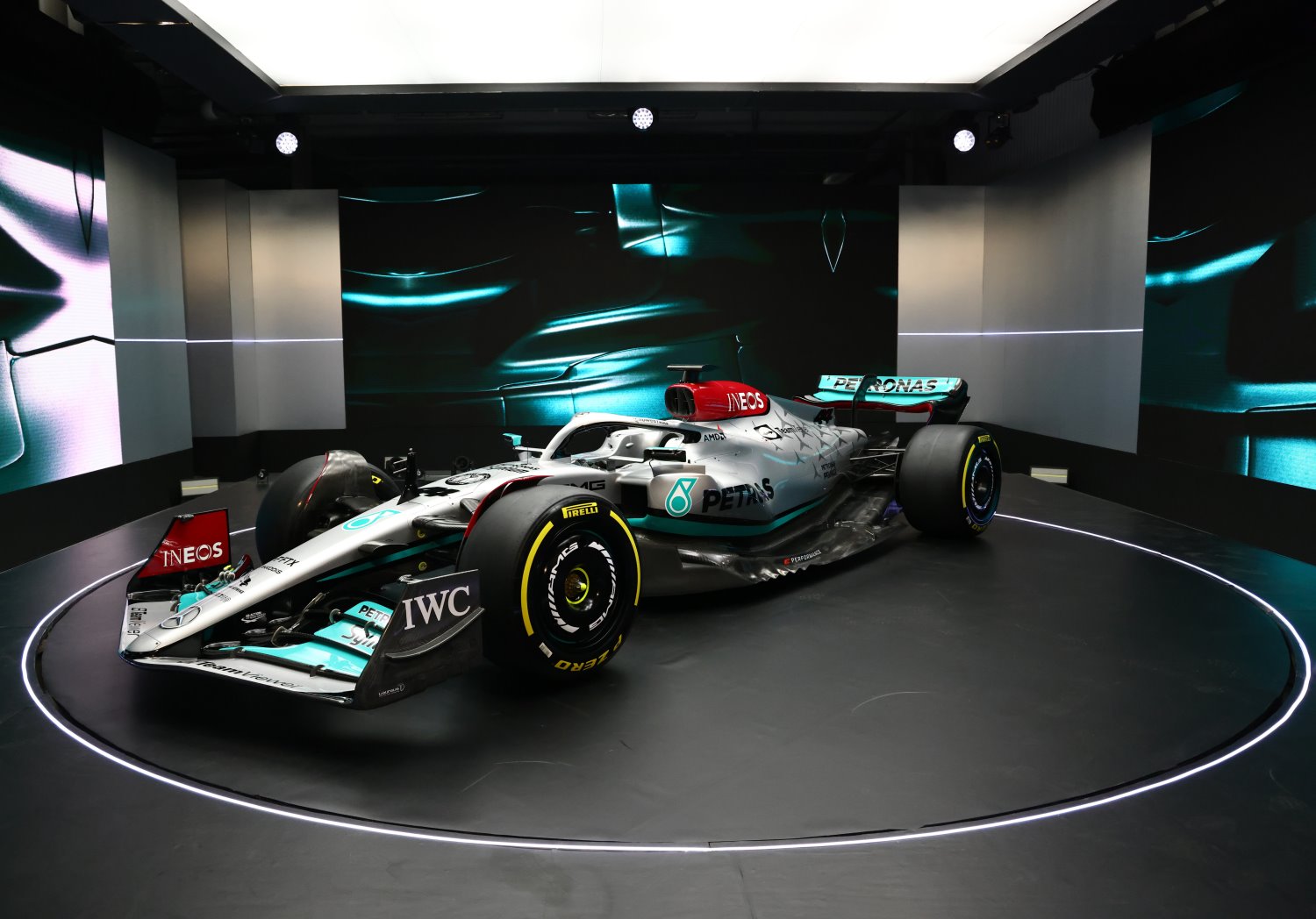
“Over the course of the year, given the regulation changes, I think the development of the overall car package will be quite strong, so the way the PU works at the start of the season won’t be the same come the final races of 2022. We must include that ability to be adaptable into the PU from the start of the season, because of the performance freeze.”
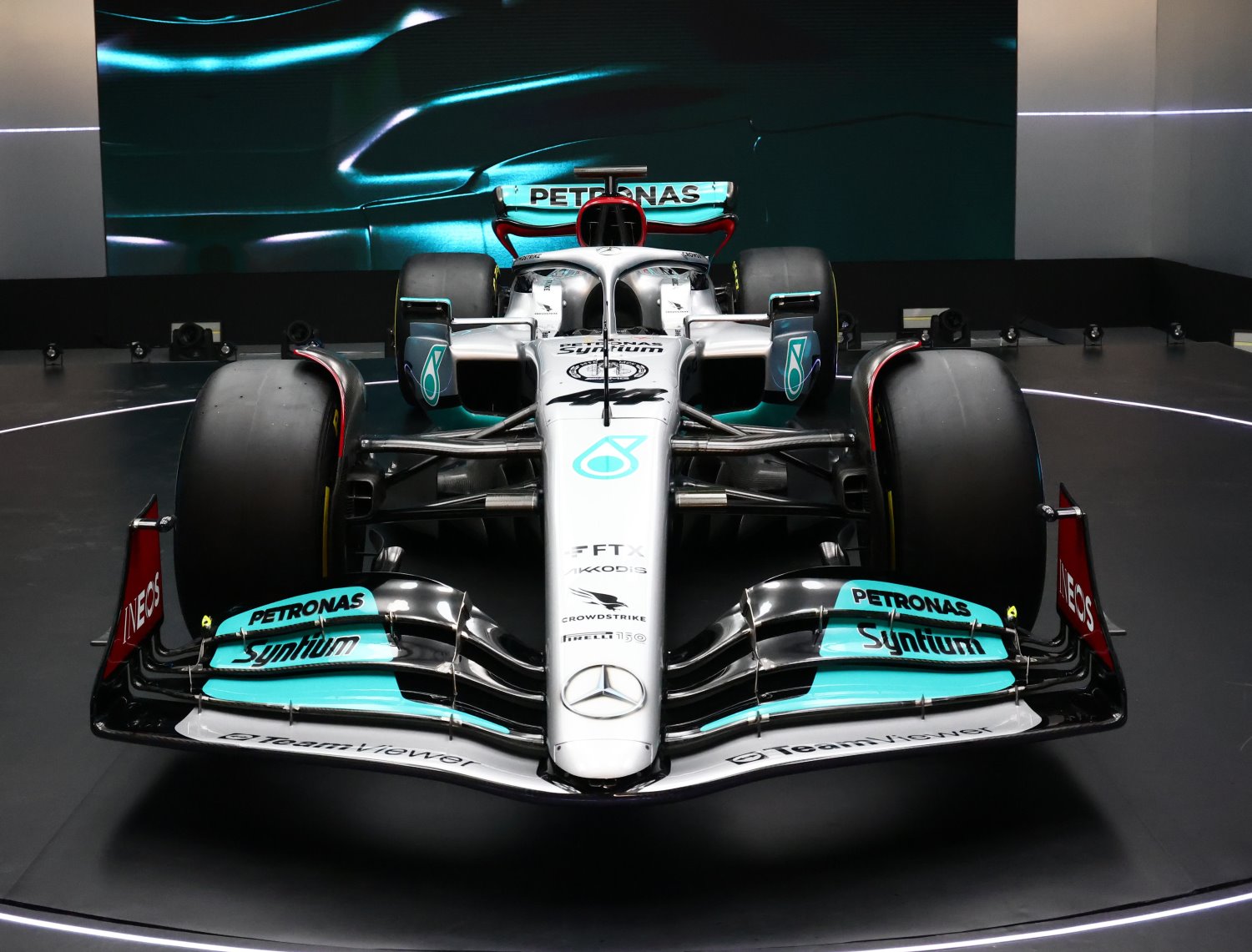
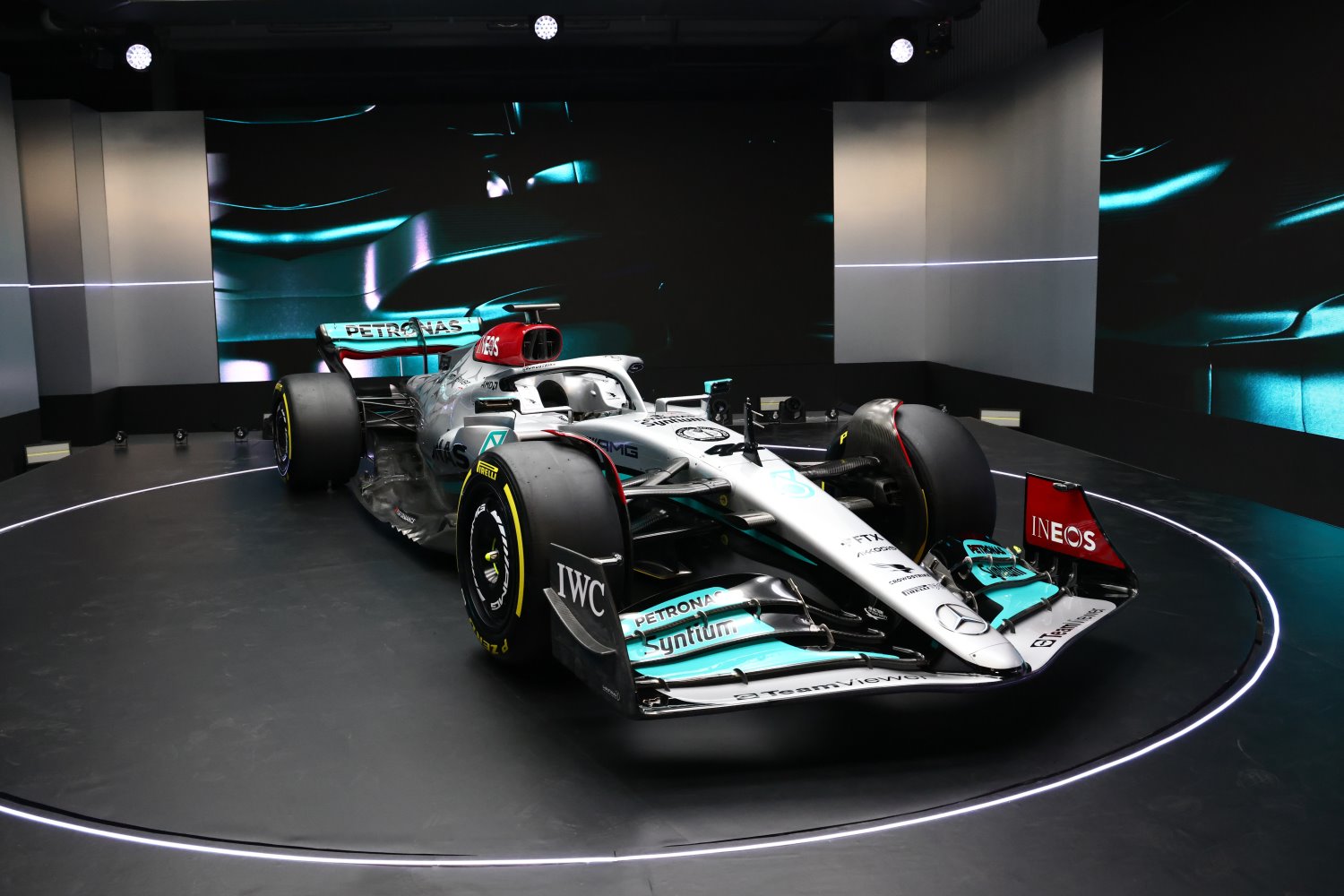
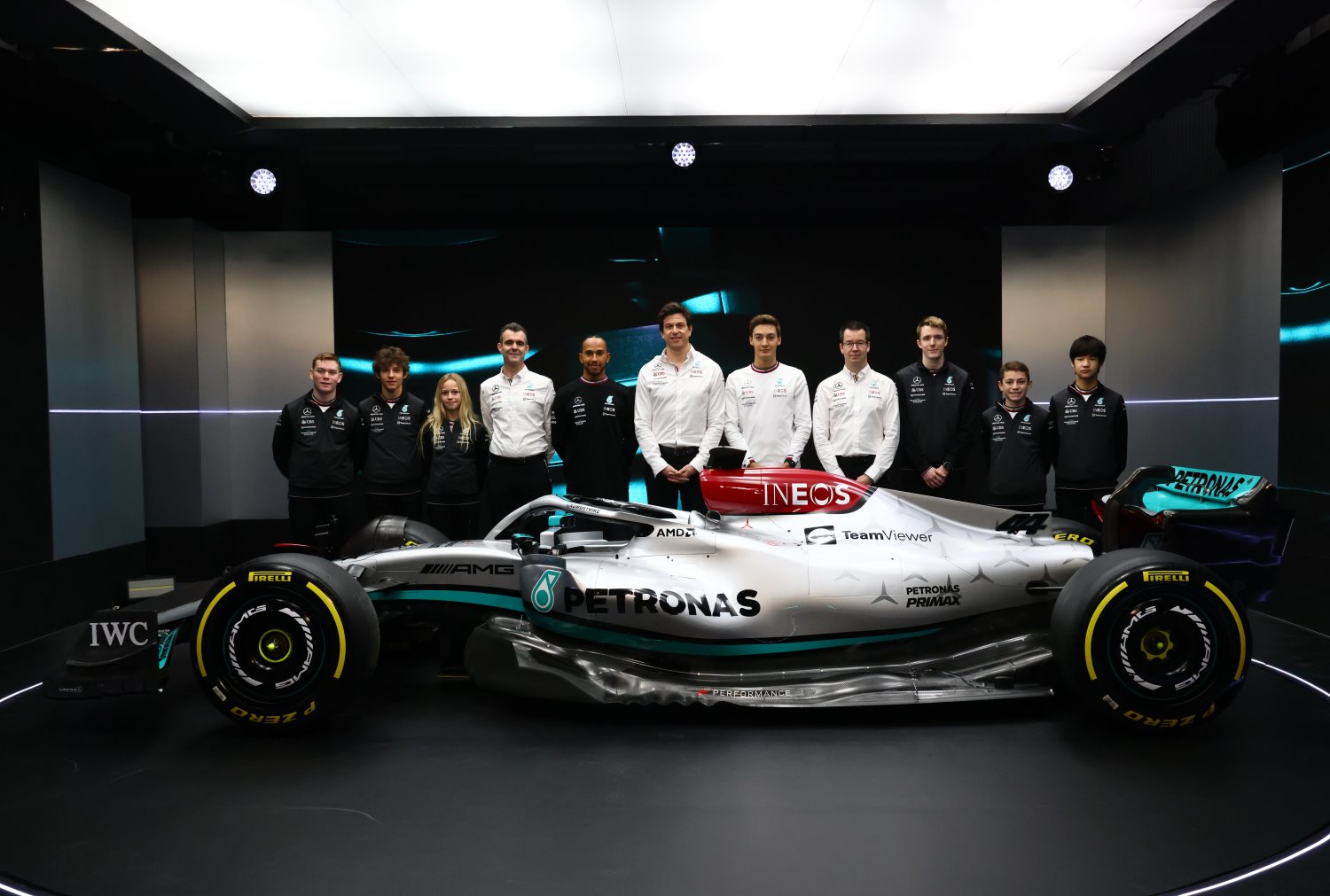
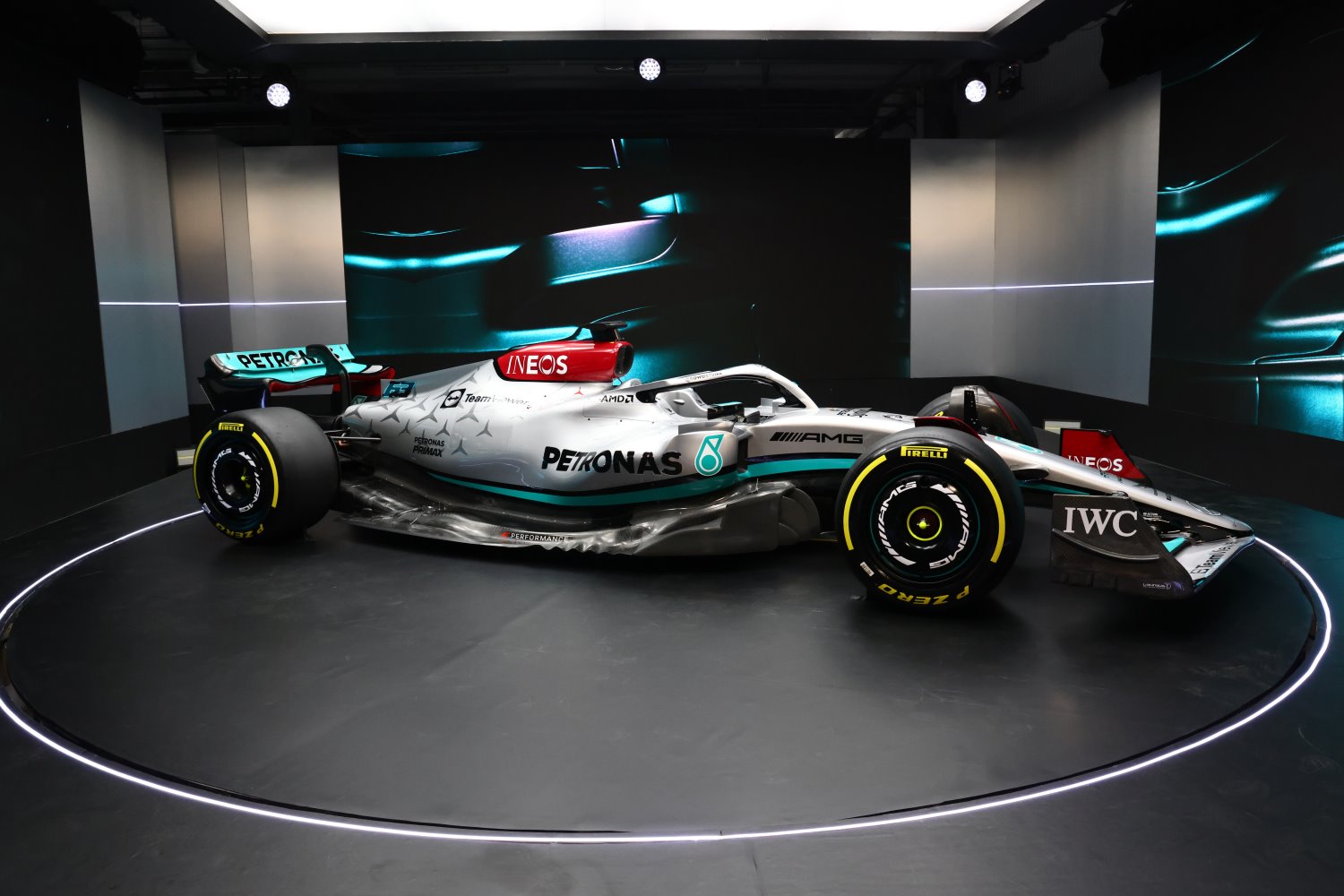
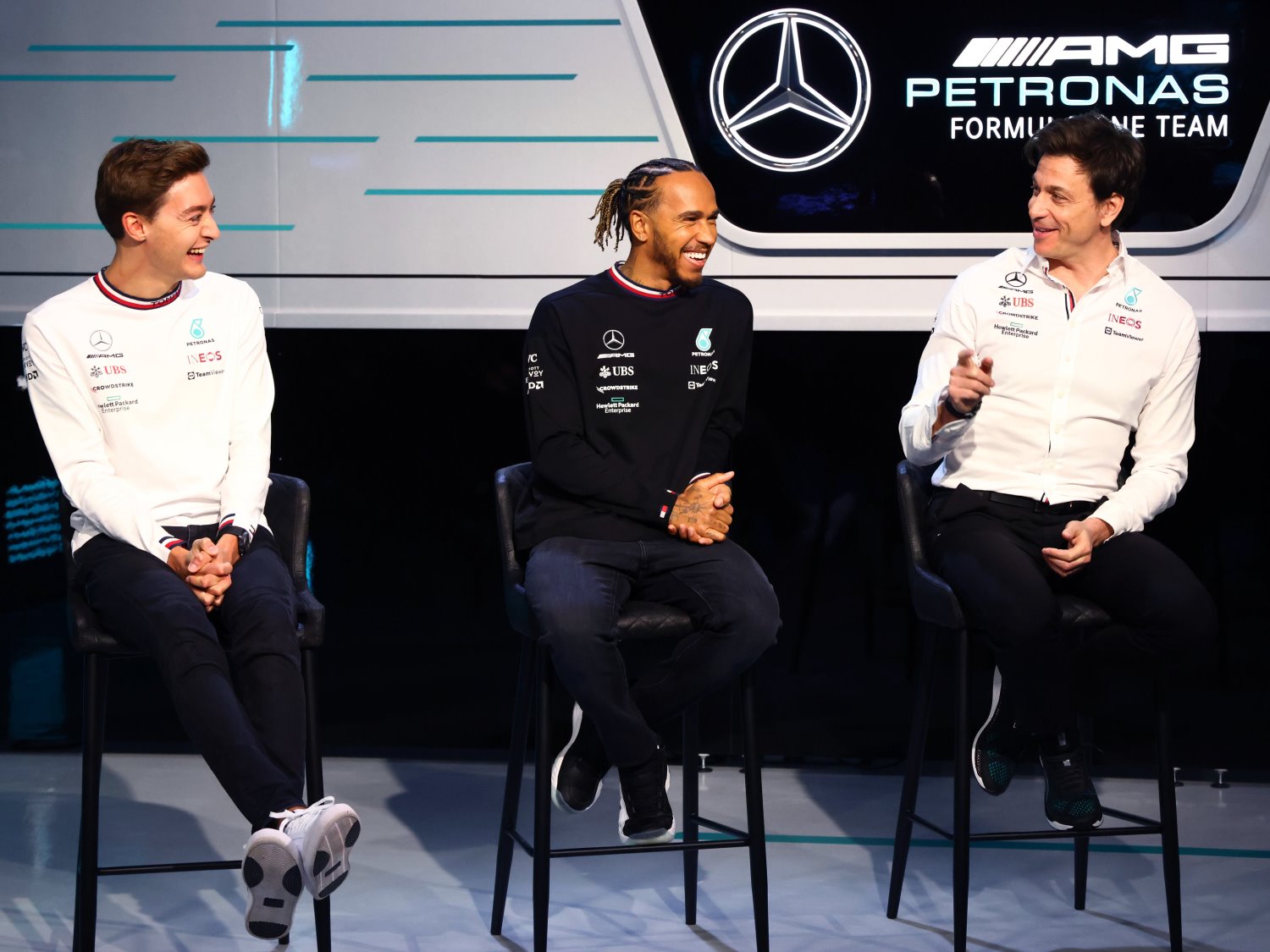
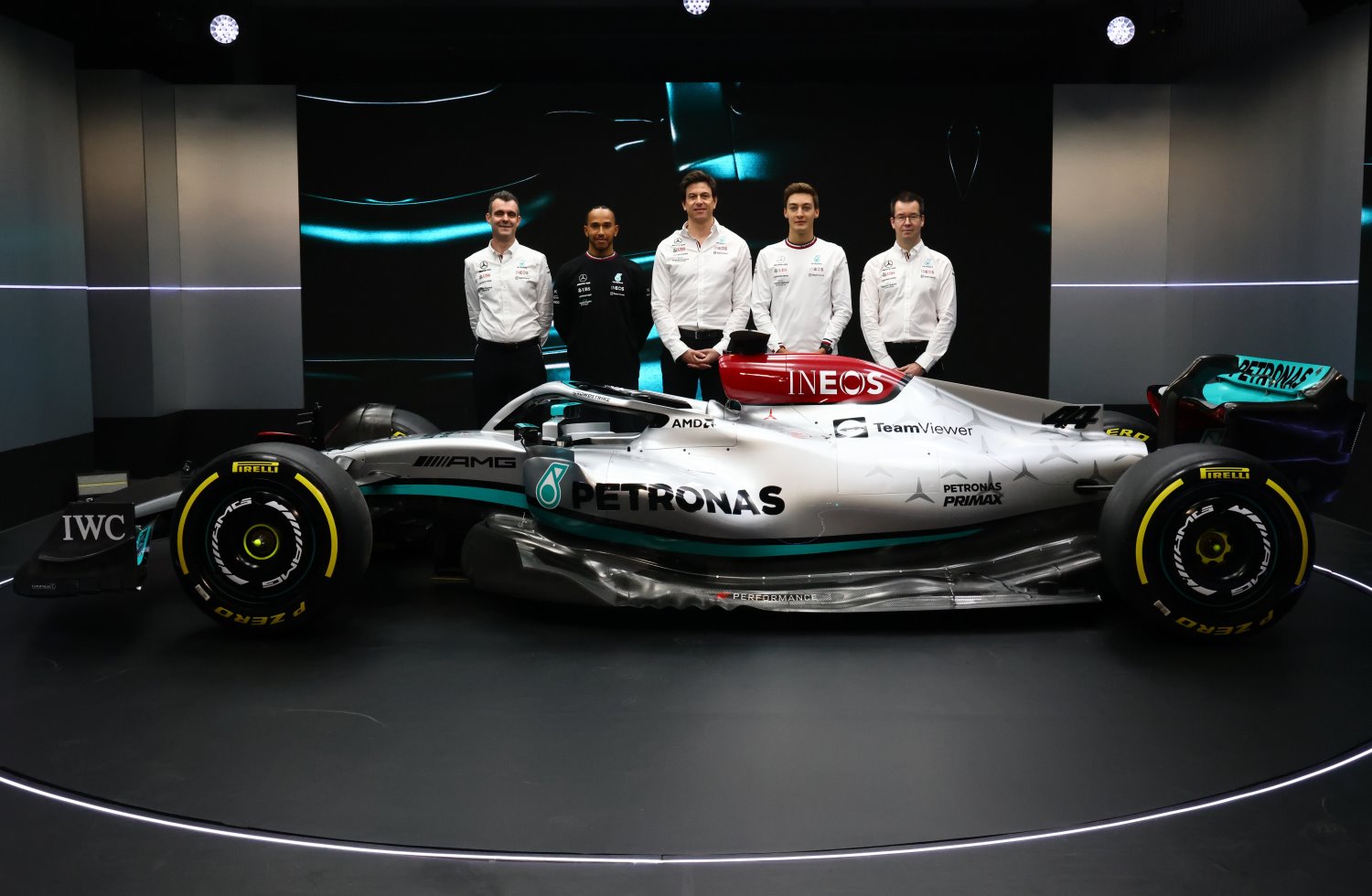
February 18, 2022
The Mercedes-AMG Petronas F1 Team today launched renderings of its challenger for the 2022 season – the Mercedes-AMG F1 W13 E Performance. With the sport’s most significant technical regulation change in a generation, the factories at Brackley and Brixworth have been bristling with activity to respond to the challenge and identify every possible opportunity to unlock performance.
After 18 months of hard work, the end result is the W13, a car which is 98% new and freshly designed from tip-to-toe with minimal carry-over from its predecessor. Behind the wheel of the Silver and Black W13 for the 2022 season will be a new driver partnership of Lewis Hamilton and George Russell, who graduates from the Mercedes Young Driver Program to step up to the eight-time world champion Mercedes-AMG works team.
“Ever since work on W13 began, I have seen an excited enthusiasm in our team members like never before, thanks to the scale of opportunity that these technical regulations provide,” said Toto Wolff, Team Principal & CEO of the Mercedes-AMG Petronas F1 Team. “Towards the end of the year when the car build project truly came together, I felt a deep passion across the whole organisation, not only in the technical arena but across our bases at Brackley and Brixworth who were embracing a mindset of ‘we can do this’”.
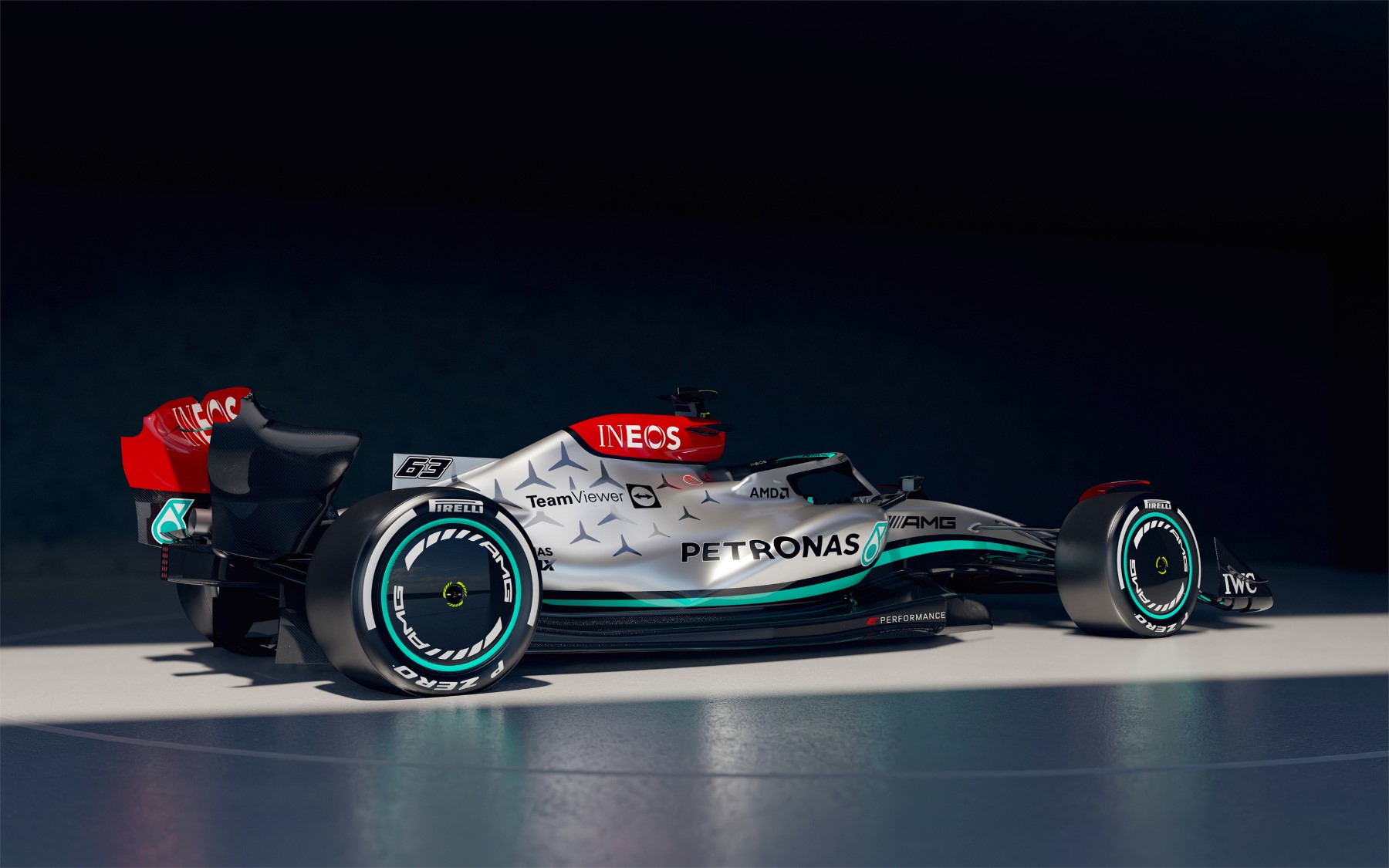
We did pretty well during the last big regulatory change into the hybrid era and performed well when we went from the narrow to the wide cars in 2017. While we have a good track record, my message is clear: we can’t rely on past success for this year’s performance, but we can rely on our people, our culture, our structure, and our mindset to do the best possible job for 2022”, continued Toto.
The team’s 2022 challenger will be named the ‘Mercedes-AMG F1 W13 E Performance’, with W13 representing the thirteenth car produced by the Mercedes-AMG works team since re-entering F1 in 2010. The ‘E Performance’ technology label signifies the continued close collaboration between the team and Mercedes-AMG, with the label featuring on all new AMG performance hybrid cars.
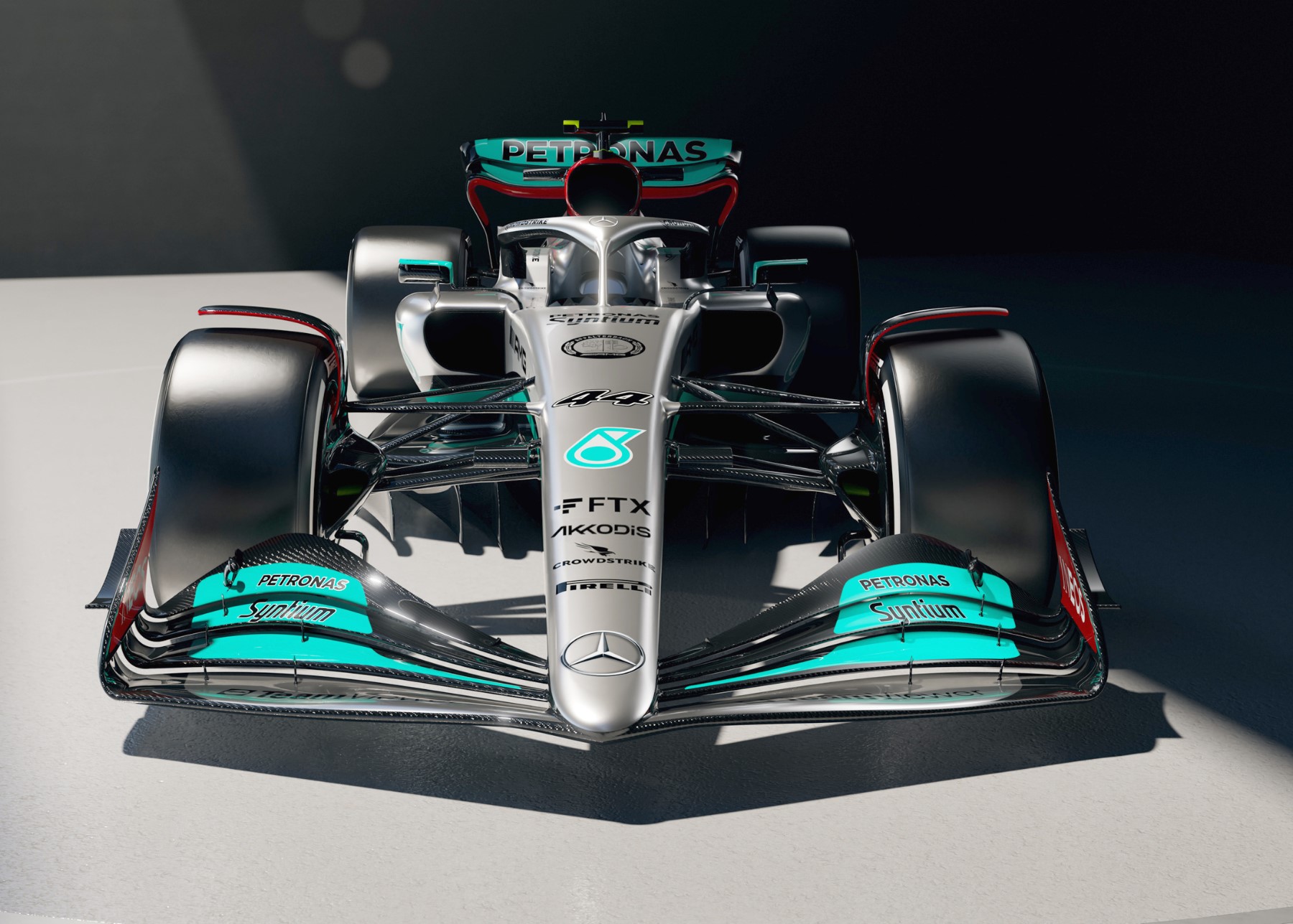
Significant Technical Changes for 2022
The technical regulation changes for 2022, whose introduction was delayed by a year as F1 negotiated the COVID-19 pandemic, represent a fundamental shift in design rules and one of the biggest regulatory changes the sport has ever seen.
“On the chassis side, the changes are huge,” said Mike Elliott, the team’s Technical Director. “We haven’t had a change as big as this one in my career. I think there are three aspects to this: first, the way the regulations are constructed is very different, particularly for aerodynamics, and that has a big impact. Second, what they are trying to achieve with the aerodynamics means the cars are fundamentally a different shape. Third, this is the first time we will have attempted such a big change under a cost cap.”
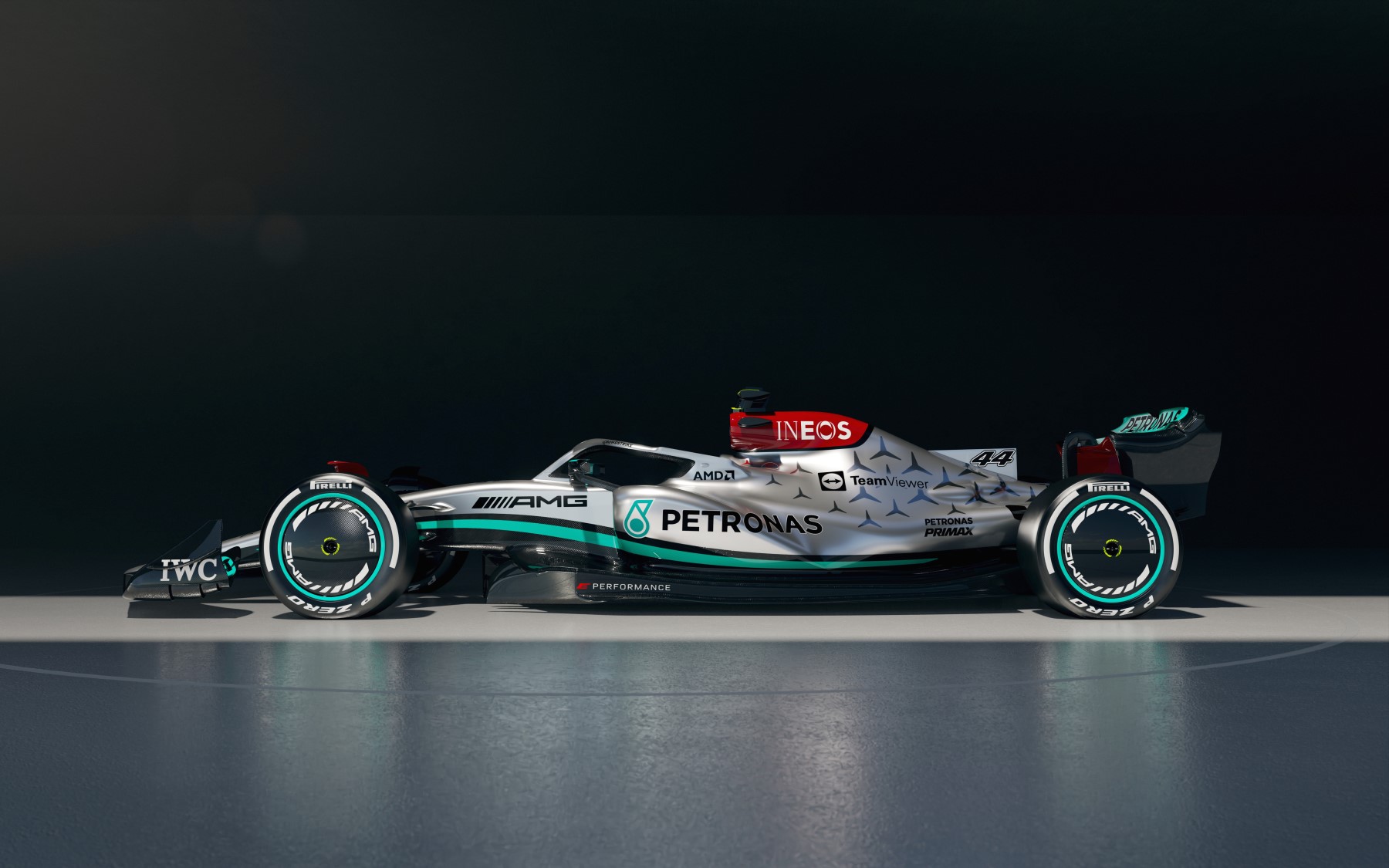
The W13 is the product of a complete redesign from top to bottom, with the steering wheel the only carryover element from its predecessor. Operating with a blank slate and such a steep development curve has been a stimulating experience for the engineers at the team’s Brackley base and something they’ve relished.
“Engineers love a challenge and therefore it is a fantastic opportunity to do something fresh. In the aerodynamic world, normally you are chasing after little bits and pieces, but with such big regulation changes, the gains have been coming in big chunks which is quite satisfying,” Mike explained. “On the flipside, we’ve had a period of success, winning the last eight Constructors’ titles and this is a reset. All the teams have started from scratch with the model provided by F1 and you don’t get to carry over the benefits or fix the issues from last year’s car, so everyone began this journey at the same level.”
However, the Aerodynamic Testing Restrictions introduced in 2021 – aimed at levelling the playing field – mean teams have had varying amounts of development opportunity at their disposal, with aerodynamic testing allocated on a sliding scale based on a team’s finishing position in the 2021 Constructors’ Championship.
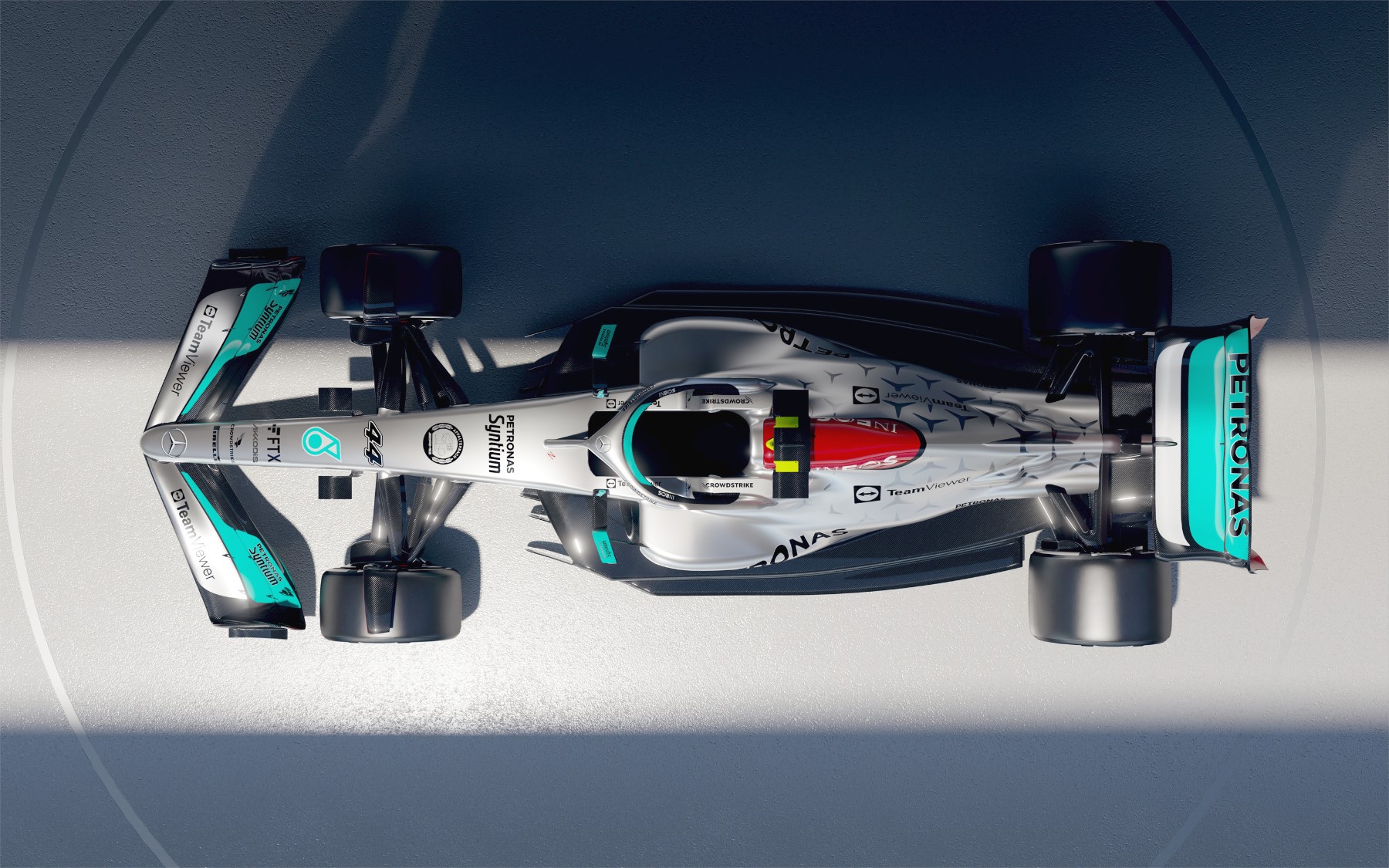
“The teams have started with different allocations of runs in the wind tunnel and hours of CFD (Computational Fluid Dynamics) so it has the potential to really mix up the order,” Mike adds. “That’s an exciting test as an engineer but there is obviously some risk in there too, in terms of our competitive position.”
Under previous technical regulations, the component detail on the cars was far greater and small pieces of aero furniture, working in unison, contributed a large amount of aerodynamic performance. For 2022, teams will find performance gains in more fundamental shape changes and bigger components than in previous years.
“Getting to the desired aero shapes has meant a complete internal repackaging, right down to the electrical layout and where we fit things like the ECU. The suspension has been redesigned to account for the loss of hydraulics and remote springs, now banned in the new regulations. Hopefully, you will also see that we have taken another step with how tightly packaged the sidepods and engine cover are. To get to this is not just a shrink-wrapping exercise but requires a huge amount of redesign and simulation to make it work,” continued Mike Elliott.
One striking difference on the 2022 cars will be new 18-inch wheels, replacing the previous 13-inch rims. Their impact on racing remains to be seen but the early signs are positive.
“What we have seen in testing, particularly the Abu Dhabi test at the end of 2021, is that there are subtle differences. It is going to change what we want to do with set-up, but it is a step in the right direction as I think the tire will help improve the racing, won’t overheat as much and will be easier to manage,” noted Mike Elliott.
Another crucial element the engineers have had to contend with in the development of the 2022 car is the freezing of certain components which are now locked in for several years, including the gearbox and Power Unit. The stakes for getting both components as strong as can be, while maintaining reliability, have rarely been higher.
Powering into 2022 and Beyond
The 2022 Power Unit builds upon the generation of championship-winning PUs produced by the team at Mercedes AMG High Performance Powertrains (HPP) since 2014 and while the PU regulation changes for 2022 haven’t been as significant or noticeable as the wholesale chassis changes, the challenge has been no less formidable.
“In 2022 we’ve been allowed one final performance upgrade, most of which needs to be delivered at the start of the season, and the ERS system upgrade must be introduced before 1st September. But this doesn’t only have an impact on 2022, because the performance specification will remain frozen until the start of the next regulation cycle in 2026,” explained Hywel Thomas, Managing Director of Mercedes AMG HPP.
More parts have been changed for the 2022 Power Unit than on any previous iterations since the introduction of the V6 Turbos in 2014, as the team fights to put itself in the strongest possible position for the freeze and sustain performance for the following seasons.
“The project we took on for 2022 was large, and it is a very broad upgrade across the different elements, to get every last bit of performance, efficiency and reliability. There are also some FIA-imposed measurements, particularly in the ERS system, that we had to accommodate as well,” Hywel notes.
With a complete redesign on the chassis, the close collaboration between the chassis team at Brackley and HPP at Brixworth has been fundamental in exploiting performance opportunities.
“The chassis team have been working very diligently and swiftly through the new regulations, so they can understand where the opportunities lie, and which areas are lap time sensitive. We make adjustments to the PU that allow the chassis team to best exploit the regulations. We might want to rearrange the installation slightly or change the PU layout to get more flexibility in those lap time sensitive areas,” added Hywel.
The regulated introduction of E10 fuel for 2022, mixing 10% ethanol with 90% fossil fuel, has also placed considerable demands on the engineering team at Brixworth, as F1 takes an important step towards its goal of 100% sustainable fuel from 2026. Working closely with Title Partner PETRONAS, the team have tested more fuel candidates and plotted more development loops with the E10 fuel than in previous years.
“It doesn’t necessarily sound like that big a change, but it is quite a significant one in the way the fuel and the PU interact. It has been a good development phase for us and working so closely with our partners, PETRONAS, that collaboration is vital,” said Hywel.
A brand-new chassis, combined with an upgraded and repackaged PU, will change how the car behaves on track in the hands of the drivers. Learning and development through the season will be crucial.
“The drivers will want the PU to do different things at different times through corners and potentially from one corner to the next, because of the car characteristics. The amount of full throttle time, the way the drivers approach and exit corners, won’t be exactly like they used to be and this will have a knock-on to how we harvest energy and deploy it.
“Over the course of the year, given the regulation changes, I think the development of the overall car package will be quite strong, so the way the PU works at the start of the season won’t be the same come the final races of 2022. We must include that ability to be adaptable into the PU from the start of the season, because of the performance freeze,” according to Hywel.
How will the engineers feel when W13 hits the Silverstone circuit later today for its first run on track?
“For all of us, who are so involved and invested, that is quite emotional, to see the chassis and PU go down the pit lane as one for the first time,” said Hywel. “To hear the engine, to sit back and reflect on all the components that are working in there together. All the people, the hard work, the effort. It’s always slightly mind-blowing, and it’s a lovely moment to message back to the factory, telling them the car has hit the track.”
A New Driver Partnership for a New Era
At the wheel of the W13 will be the sport’s most successful driver, seven-time World Champion Lewis Hamilton, partnered by fellow Briton and Mercedes Young Driver Programme graduate George Russell, making his debut for the Mercedes-AMG team in his fourth year in F1.
Lewis Hamilton enters the 2022 season with 103 wins, 103 pole positions and 182 podiums as he targets a record eighth World Drivers’ Championship.
“I have never seen him more determined,” said Toto Wolff. “Lewis is the best driver in the world, and he is joined by one of the brightest and most promising of their generation in George. I have no doubt that we can create an environment of partnership between the two, of productivity to develop this new car which will be essential, whilst maintaining a healthy competition that will motivate them and the wider team.”
George Russell joined the Mercedes Young Driver Programme at the start of 2017, following an impressive record in the junior categories, becoming GP3 champion the same year. Over the winter, he has been a regular at the team’s Brackley base, getting reacquainted with some familiar faces.
“George is just getting on with the job. I know he’s had a good winter of training and we’ve seen him in the factory, working on the simulator and with his engineers. This team has always been his home and therefore the transition to driving for us has been very smooth,” continued Toto.
The team benefits from a strong Reserve Driver line-up with reigning Formula E World Champion, Nyck De Vries, continuing to join his Mercedes-EQ Formula E teammate, Stoffel Vandoorne, on the team’s support roster.
With George Russell graduating from the Mercedes junior programme to gain his opportunity as a Mercedes-AMG F1 driver, there is plenty of inspiration to be had for our seven junior programme drivers for 2022: Andrea Kimi Antonelli, Paul Aron, Yuanpu Cui, Luna Fluxa, Daniel Guinchard, Alex Powell and Frederik Vesti. Six of the seven were present at this morning’s W13 launch and all have an exciting challenge ahead of them this season in various categories.
A Return to Silver with Diversity and Inclusion Embedded in the Team’s DNA
With the move to a black livery at the start of the 2020 F1 season, the team made a visible commitment to promoting greater diversity and inclusion within our team and our sport. A considerable amount of study, research and work was subsequently undertaken, culminating later that year in the launch of Accelerate 25: a detailed five-year programme to become a more diverse and inclusive team.
While the black livery reverts to predominantly silver for 2022, the roots of our mission to become a more diverse team have been firmly planted and will continue to bear fruit in the years to come. Accelerate 25 committed the team to ensuring at least 25% of all new team members who joined the team were from under-represented groups until the end of 2025. In year one of the programme, that figure reached 38%. Female employees have risen from 12% to 14% of our workforce and employees from minority ethnic groups have risen from 3% to 6% during 2021. important progress but with recognition of, and commitment to, a long way ahead.
“The black livery was a clear intent and a clear demonstration of our mission to become a more diverse and inclusive team. It has become part of our DNA, but the silver colour of the Silver Arrows is as much our DNA, it’s our history. As a team we have grown from the Silver Arrows to slowly becoming a more diverse and inclusive team and therefore our colours going forward will be silver and black,” said Toto Wolff.
Over the past two years, the team has developed long-term partnerships with the Mulberry Schools Trust, the Stemettes and the Association of Black and Minority Ethnic Engineers UK to inspire and motivate people from under-represented groups towards technical careers, through STEM education with the hope they aspire to join Mercedes-AMG F1 in the future.
“Increasing the diversity of our team isn’t about meeting a quota, it’s about recruiting the very best people regardless of ethnicity, gender, religion and sexual orientation,” explained Toto. “Our work inspiring people who might otherwise think a career in engineering, technology or motorsport isn’t for them will widen the talent pool we have available. A diverse workforce drives performance.”
Technical Specifications
Chassis
Monocoque: Molded carbon fiber and honeycomb composite structure
Bodywork: Carbon fiber composite including engine cover, sidepods, floor, nose, front wing and rear wing
Cockpit: Removable driver’s seat made of anatomically formed carbon composite, six-point driver safety harness, HANS system
Safety Structures: Cockpit survival cell incorporating impact-resistant construction and penetration panels, front impact structure, prescribed side impact structures, integrated rear impact structure, front and rear roll structures, titanium driver protection structure (halo)
Front Suspension: Carbon fiber wishbone and pushrod-activated torsion springs and rockers
Rear Suspension: Carbon fiber wishbone and pullrod-activated inboard springs & dampers
Wheels: BBS forged magnesium
Tires: Pirelli
Brake System: Carbone Industries Carbon / Carbon discs and pads with rear brake-by-wire
Brake Calipers: Brembo
Steering: Power-assisted rack and pinion
Steering Wheel: Carbon fiber construction
Electronics: FIA standard ECU and FIA homologated electronic and electrical system
Instrumentation: McLaren Electronic Systems (MES)
Fuel System: ATL Kevlar-reinforced rubber bladder
Lubricants & Fluids: PETRONAS Tutela
Transmission
Gearbox: Eight speed forward, one reverse unit with carbon fiber maincase
Gear Selection: Sequential, semi-automatic, hydraulic activation
Clutch: Carbon plate
Dimensions
Overall Length: Over 5000mm
Overall Width: 2000mm
Overall Height: 970mm
Overall Weight: 795kg
Mercedes-AMG F1 M13 E Performance – Technical Specification
Power Unit Specification
Type: Mercedes-AMG F1 M13 E Performance
Minimum Weight: 150 kg
Power Unit Perimeter: Internal Combustion Engine (ICE)
Motor Generator Unit – Kinetic (MGU-K)
Motor Generator Unit – Heat (MGU-H)
Turbocharger (TC)
Energy Store (ES)
Control Electronics (CE)
Power Unit Allocation: Three ICE, TC, MGU-K & MGU-H per driver per season
Two ES & CE per driver per season
Internal Combustion Engine (ICE)
Capacity: 1.6 liters
Cylinders: Six
Bank Angle: 90
No of Valves: 24
Max rpm ICE: 15,000 rpm
Max Fuel Flow Rate: 100 kg/hour (above 10,500 rpm)
Fuel Injection: High-pressure direct injection (max 500 bar, one injector/cylinder)
Pressure Charging: Single-stage compressor and exhaust turbine on a common shaft
Max rpm Exhaust Turbine: 125,000 rpm
Energy Recovery System (ERS)
Architecture: Integrated Hybrid energy recovery via electrical Motor Generator Units
Energy Store: Lithium-Ion battery solution of minimum 20 kg regulation weight
Max energy storage/lap: 4 MJ
Max rpm MGU-K: 50,000 rpm
Max power MGU-K: 120 kW (161 hp)
Max energy recovery/lap MGU-K: 2 MJ
Max energy deployment/lap MGU-K: 4 MJ (33.3 s at full power)
Max rpm MGU-H: 125,000 rpm
Max power MGU-H: Unlimited
Max energy recovery/lap MGU-H: Unlimited
Max energy deployment/lap MGU-H: Unlimited
Fuel & Lubricants
Fuel: PETRONAS Primax
Lubricants: PETRONAS Syntium
